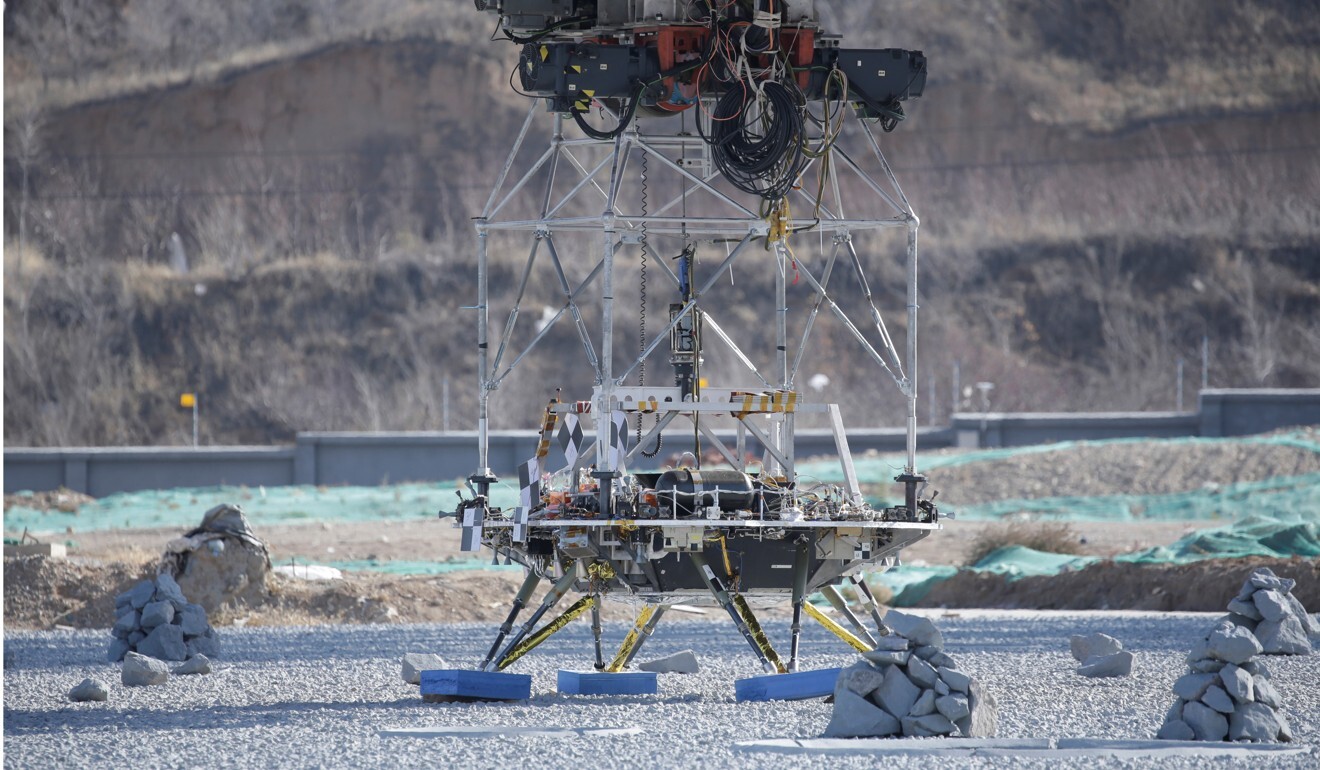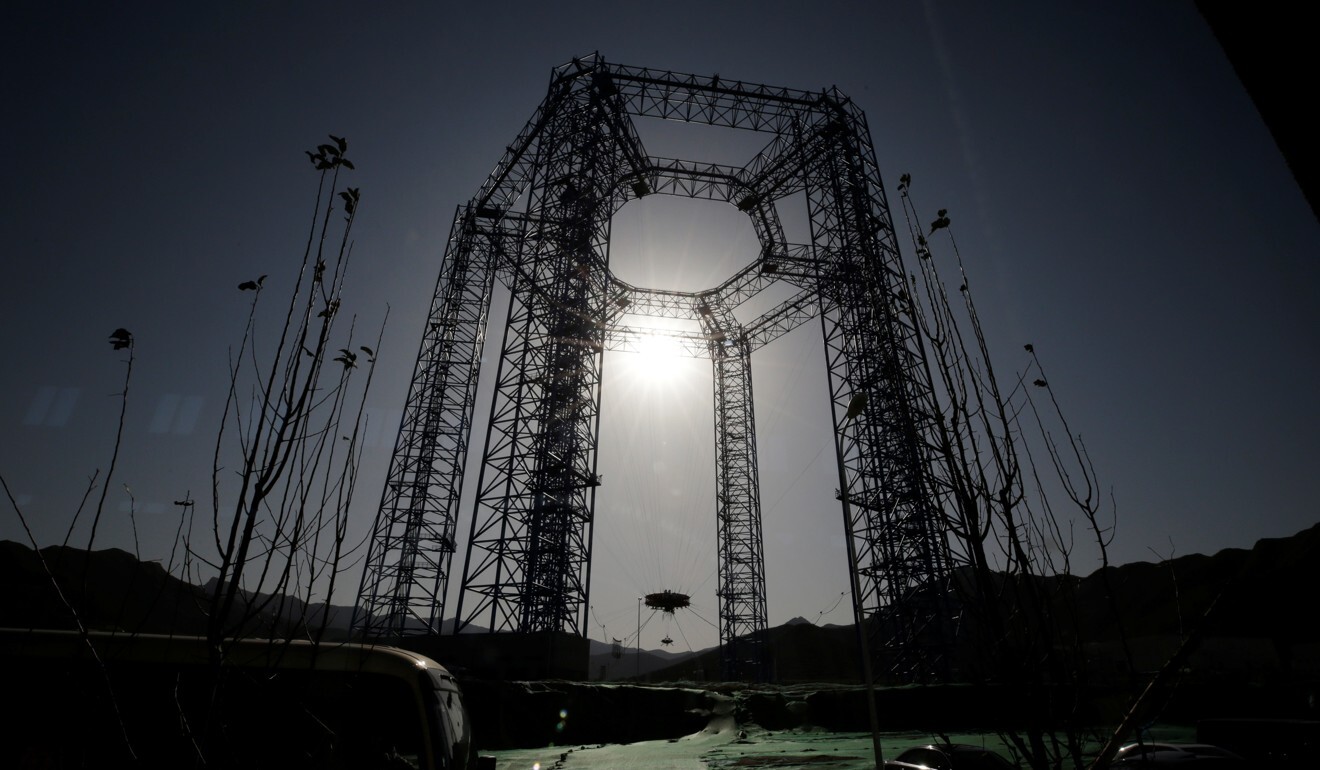Mars here we come: China completes lander test for 2020 mission
- Module successfully hovers, avoids obstacles at test site in northern China
- Programme on track to begin seven-month journey to red planet next year, head of space administration says

China on Thursday successfully completed a lander test in northern Hebei province ahead of an unmanned exploration mission to Mars next year.
The refrigerator-sized craft was lowered on 36 cables from a crane to simulate gravity on the red planet, which is about a third of that found on Earth. It used on-board jets to alter its downward course, hovered above rock piles and found a safe place to land, in a demonstration of its ability to avoid obstacles.
Speaking ahead of the test, Zhang Kejian, head of the China National Space Administration (CNSA), said the country was on track to launch the mission in 2020, with July being a likely launch date.
“This is the debut of China’s Mars exploration mission,” the administration said in a statement.
Zhang said the goal of the mission was to “conduct a comprehensive exploration of Mars and make detailed inspections of key areas”.
An as yet unnamed spacecraft would deliver a rover to the Martian surface, he said.

“The development work is progressing smoothly.”
Zhang Rongqiao, chief architect of the Mars exploration programme, said the journey through space would take about seven months, while the landing would take seven minutes.
The test was conducted at a sprawling test site in Huailai, northwest of Beijing and witnessed by invited guests from 19 countries, including the ambassadors of France, Italy and Brazil.

China’s first attempt to reach Mars flopped in 2012, when Russia’s Phobos-Grunt spacecraft carrying China’s Yinghuo 1 probe failed to get beyond Earth’s orbit and eventually broke up over the Pacific Ocean.
Four years later, Beijing opted to launch its own Mars programme and set up multiple research and testing facilities. These included a self-sustaining facility in Beijing to see how humans would cope with prolonged stays in a space station and a remote site in the Gobi desert that simulated the Martian landscape.
China is not the only country planning to go to Mars next summer. Nasa’s Mars 2020 is set to lift off on July 17, while the Rosalind Franklin, developed by the European Space Agency and Russia’s Roscosmos State Corporation is expected to follow soon after. Both missions are scheduled to take about six months to reach the red planet.
Also next year, the United Arab Emirates’ Hope Mars Mission – launched by a Japanese H-IIA rocket – will set off for Mars in the hope of getting there in time to mark the UAE’s 50th anniversary in 2021.
While China has not announced any clear plans to cooperate with international partners on its Mars missions, Zhang said that “on the basis of equality, mutual benefit, peaceful use and inclusive development” the CNSA was “willing to join hands with space agencies, space science research entities and foreign space science enthusiasts to strengthen exchanges and cooperation in the follow-up major aerospace engineering tasks”.
“[We can] share the achievements of aerospace development, jointly promote the development of the aerospace industry, and contribute more wisdom and strength to the promotion of common human destiny, civilisation and social progress,” he said.
China has developed the powerful Long March 5 rocket to transport the probe to Mars. The same rocket is also meant to deliver the Chang’e 5 probe to the moon by the end of this year or early next to bring back samples of lunar rocks.

Chang’e 4 successfully touched down on the far side of the moon in January, a historic first and major achievement for China’s space programme.
China made its first lunar landing in 2013 and expects to complete a modular space station by about 2022, about the time when Nasa is said to start building a new space station laboratory to orbit the moon, as a pit stop for missions to other parts of the solar system.
In 2003, China became the third nation to put a man in space with its own rocket after the former Soviet Union and the United States.
Since then, it has been racing to catch up with Russia and the United States and become a major space power by 2030.